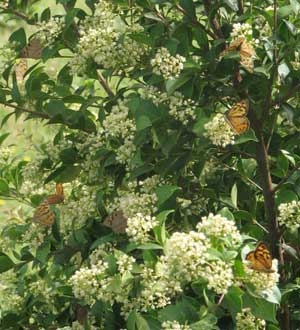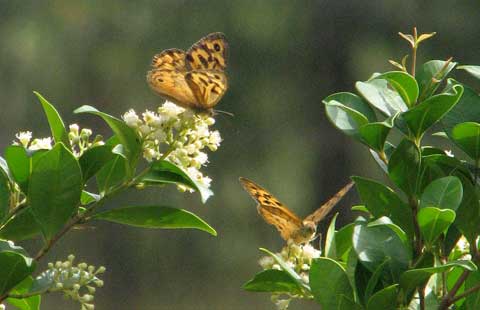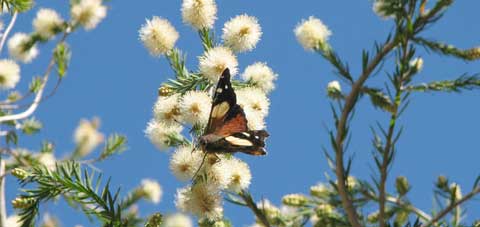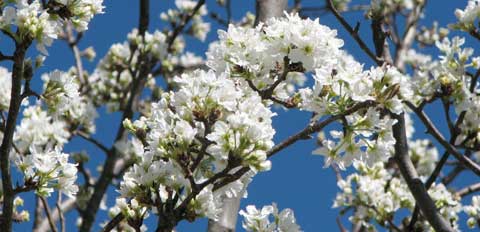 The native Brush Cherry (Szygium australe) in my garden is just opening its buds.
The native Brush Cherry (Szygium australe) in my garden is just opening its buds.
Somehow the word went straight out into the butterfly world, for within a day of this happening, a certain species suddenly appeared to claim those flowers.
I counted around 35 of these butterflies just on the sides I could see. They weren’t my usual Wanderer butterfly, so out came the butterfly book.
 What they are (I think) is Klug’s Xenica (Geitoneura klugi klugi, a member of the Nymphalinae family, sub-family Satyrinae). If I’m right, it’s a quaint semantic coincidence, as the species of this sub-family is also known as the brush-footed butterfly.
What they are (I think) is Klug’s Xenica (Geitoneura klugi klugi, a member of the Nymphalinae family, sub-family Satyrinae). If I’m right, it’s a quaint semantic coincidence, as the species of this sub-family is also known as the brush-footed butterfly.
Different meanings of ‘brush’ — but the brush-footed butterfly loves the Brush Cherry blossoms!
 I have two of these shrubs planted in my yard. They are native, although not indigenous to the area, but this is my garden after all. I think they are Melaleuca ericiflolia, or Swamp Paperbark. This Spring everything seems blessed with an abundance of blossoms, in excess of years past.
I have two of these shrubs planted in my yard. They are native, although not indigenous to the area, but this is my garden after all. I think they are Melaleuca ericiflolia, or Swamp Paperbark. This Spring everything seems blessed with an abundance of blossoms, in excess of years past. My two huge nashi pear trees are decked out in bridal white — so pure and pretty that it hurts my heart to see it.
My two huge nashi pear trees are decked out in bridal white — so pure and pretty that it hurts my heart to see it.